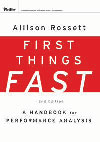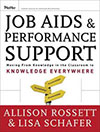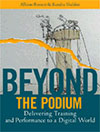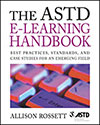Welcome two guest bloggers, Ken and Darby Hubbell, father and daughter.
First, from Ken–
It is my humble opinion (and rather biased, I will admit) that my 8th grade daughter, Darby, is a prime example of what it means to be a 21st Century student. She is well on her way to a lifetime journey of learning, limited only by having enough time to obtain all the  information and skills she desires. And just how does my prodigy achieve this array of abilities? Is she a savant? Is she genetically enhanced? No, she has simply grown up in the generation that acknowledges the classroom is just one small element in the larger educational picture. And, like those “Where’s Waldo” pictures she and I shared when she was little, she now searches for anything, anytime, anywhere courtesy of the technology of today.
information and skills she desires. And just how does my prodigy achieve this array of abilities? Is she a savant? Is she genetically enhanced? No, she has simply grown up in the generation that acknowledges the classroom is just one small element in the larger educational picture. And, like those “Where’s Waldo” pictures she and I shared when she was little, she now searches for anything, anytime, anywhere courtesy of the technology of today.
Last year I had the opportunity to see her in action first hand. I was hospitalized for over a month, during which Darby came to stay with me for a full week. Not wanting to get behind in her schoolwork, her 21st Century learning skills and adaptability kicked in and she not only kept up with her work, but completed her assignments in half the time required by her peers. The following is her version of the story…
From Darby–
Working outside of school would have been very difficult if I didn’t have all the resources I have today. When my dad fell ill this past fall and I knew I had to be with him, I brought along some clothes, my laptop, cell phone, and my iPod Touch 4. I visited my dad every day in the hospital, bringing along my laptop and iPod.
 I acted like it was a regular school day. I would set up my laptop and go straight to my school email. Every middle school student at my school has a school email that connects them together on the same server. My best friend would email me after every class, telling me my assignments. I had no textbooks with me, but that was OK since we all have online text books.
I acted like it was a regular school day. I would set up my laptop and go straight to my school email. Every middle school student at my school has a school email that connects them together on the same server. My best friend would email me after every class, telling me my assignments. I had no textbooks with me, but that was OK since we all have online text books.
So the only problem I had would be math, a subject hard to learn without guidance and initially we thought there would be no way to send me worksheets in a quick manner. Then my math teacher found a way to send worksheets by scanning them into the computer and then emailing them to me. I was able to fill them out using the highlighter and sticky note option in Adobe reader giving me a place to write my answers. I then emailed them back to my teacher. I even took two math tests during the two weeks I was gone. I couldn’t allow myself be behind by two weeks, besides when your alone and bored in an unfamiliar place, you begin to miss school, even the class work.
During this time, I had to send in two “article of the week” assignments. These require you to read an article from CNN, the New York Times, News Week, etc., highlight important things, make comments on what you have underlined and write an 8-10 sentence review on the article. So all I did was use my common sense and my excellent ability to work with Microsoft Word. I copied the article into Word and used the highlighter option to mark the key items, and then I used the comment feature and made my comments wherever I felt was necessary. After I made all my comments, I did a page break and wrote my 8-10 sentences on the articles, like the one I did on how “texting can affect your driving.” Thanks to spell check, I made sure everything was ready. Then, using my student email, I sent it straight to my English teacher.
The last assignment was for Language Arts and it befuddled me a little, but then an idea hit me right on my head. What I had to do was make vocabulary note cards. The first problem that occurred to me was I had no clue what the words were let alone their definitions. Sending a text would be too big and take too long for any of my friends to enter in class, so what they did was a little more creative. They took a picture of the words and definitions with their cellphone cameras and posted it on my Facebook wall. Now I had the exact word with the exact definition. No text abbreviations or all the confusion that comes with that. This assignment requires you have to have the word written on the front of a note card with an additional seven times for spelling practice, then on the back you have to write the definition and how to use it in a sentence. Unfortunately a computer can’t legibly take large pictures of all fifteen note cards together, so I took my iPod touch 4 and used its camera to take pictures, front and back, of each note card. For each picture there is an option to email the pictures, post on Facebook, etc., so I emailed the pictures to my teacher and bam, got a ten out of ten on the assignment!
Growing up in the twenty first century has opened many educational doors for me. If I don’t understand something all I have to do is hop on Google to find the answers. I have some of the best teachers at my fingertips, including Khan Academy, a site that really helped me with all of the math I was learning. My smart phone was with me so I could look up anything at any time. Going to school could become such a brand new thing. This is a great study and it raises a huge question. Do we really need teachers? I got along fine without one; can every child get around without one? Maybe we can use teachers in the classroom to help with homework and receive our main learning from online teachers.
Ken concludes–
When I hear how far behind we are in education in the United States – many other countries are facing this as well – I have to question which generation is being used as the baseline. I believe that if we provide more “guide on the side” instead of “sage on the stage,” teaching them more about how to fish for what they need and less about feeding them a morsel at a time, we will be pleasantly surprised with the outcome. These children want to learn. As Darby said, ” Maybe we can use teachers in the classroom to help with homework and receive our main learning from online teachers.” I know in her experience using the Khan Academy, she was able to pick and choose from a variety of instructors until she found the one who presented the material in a way she could understand it. With a network of similar subject matter experts in all subjects (see MIT and Harvard’s new OpenSource college courses for example) and for a variety of demographics, students from around the globe may finally have equal access to the best instruction for their own personal condition. These students will find a way; with technology and access we just need to let them.
Ken is a 27 year veteran in animation, 2D/3D entertainment, business games and simulations. He has been a speaker at Macromedia/Adobe User Conventions, NASA and the East Coast Games Conference; and was the 2011 recipient of the Association for Educational Communications and Technology Immersive Learning Award. Ken is currently researching advanced techniques for business education at Ingersoll Rand, leveraging games and learning technologies to promote innovation and leadership. Visit Ken’s blog.
Darby is an 8th grader who enjoys writing, cheerleading, soccer, volleyball, singing and playing guitar.






To speak directly to some of the questions, I have to say yes, we really do need teachers and mostly because, no, not everyone can get along without one. But I can definitely sign off on the “guide on the side” approach. I honestly cannot see how that won’t be the direction of education in all sectors. We have already seen faculty to student ratios balloon exponentially in K-12 and higher education. The creative use of limited resources– namely instructors– is almost a necessity these days.
Further, I definitely see this blended approach stretching in to the private sector. We recently conducted focus groups at my company and they resoundingly wanted instructor-led training. This surprised us. When we pressed they said it was not their comfort level with technology, but the fact that eLearning modules tended to be dropped in their laps without any set up, guidance or time to navigate. I do not see the teacher/instructor role disappearing, but I do see a dramatic change from traditional lecturer to proctor of blended learning strategies. People will always thirst for at least a little bit of guidance.